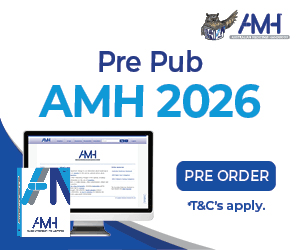Blood borne virus (BBV) testing in the healthcare setting is often initiated by nursing and midwifery staff, including infection prevention and control (IPC) nurses and hospital coordinators for the management of occupational exposure incidents, midwives for antenatal screening, and nurses throughout diverse community settings including community, correctional, refugee and sexual health settings.1
Nurses and midwives play a vital role in ensuring BBV testing is undertaken in a way that demonstrates knowledge, confidence and skill, while ensuring consistency with the national guidelines. It is important that they provide compassion and respect the privacy and impact the process can have on the person being tested.
OVERVIEW OF THE ISSUE
Barriers have been identified in the move to normalise BBV testing within community and healthcare settings, including a lack of time, a lack of both confidence and knowledge in how to discuss BBVs, and the presence of stigma and discrimination that impact the testing experience.2Pre-and post-testing discussions remain a significant feature of the testing process and given the ongoing stigma that continues to impact people living with BBVs, these discussions need to be conducted with sensitivity and in a supportive manner.2Testing discussions and informed consent are critical gateways to link people to treatment and care,2and education programs aimed at increasing the knowledge of the nurse and midwife to ensure these discussions are delivered with confidence are vital.
OPPORTUNITIES TO ADDRESS
Nurses and midwives have enormous opportunity to positively influence the lives of their patients, and they have a responsibility to provide care that is person-centred, safe and in a supportive environment.3Educational interventions to improve healthcare worker knowledge of transmission and risk, legislation, current guidelines and informed consent, have demonstrated improved outcomes, including increased knowledge of BBV transmission and risk, improved confidence in the discussion process and reducing stigma.4,5It is essential all healthcare workers who participate in BBV testing are trained in the testing process and understand the legislation that governs the testing process.
Education courses are available that provide nurses and midwives opportunity for learning outcomes including: epidemiology, transmission, prevention and management knowledge, testing requirements including intervals and window periods, a greater understanding of the personal impact of testing, and building on risk assessment skills and pre- and post-test discussions.1
CONCLUSION
The provision of BBV education is limited in undergraduate and post-graduate nursing and midwifery education programs, requiring it to be undertaken in the workplace setting. Mandatory training requirements need to be added to position descriptions for nursing and midwifery roles that are involved in BBV testing, to ensure the healthcare worker can confidently deliver information to consumers and undertake testing and counselling discussions proficiently.
References
- Australasian College for Infection Prevention and Control. Blood Borne Virus Testing Course 2024 [Available from: acipc.org.au/ education/blood-borne-virus-testing-course/.
- Lenton E, Johnson J, Brown G. Upscaling HIV and hepatitis C testing in primary healthcare settings: stigma-sensitive practice. Australian Journal of Primary Health. 2021;27(4):255-8.
- Kerr S, Hassall M. Nurses can be leaders in dismantling stigma and discrimination toward people with blood borne viruses. Australian Nursing & Midwifery Journal. 2020 Jan-Mar:43.
- Johnson J, Carr C, McDonald SJ, Flood MM. Talking testing: Impact of a training intervention on midwives’ antenatal HIV, hepatitis B and hepatitis C screening practice. Women and Birth. 2021;34(5):e520-e5.
- Ellen Perrett S, Erricker M, Lyons M. Evaluation of an e-learning package to improve understanding of blood-borne viruses amongst prison staff in Wales, UK. International Journal of Prisoner Health. 2014;10(1):47-54.
Author
Karen McKenna, Infection Prevention and Control Consultant for Australasian College for Infection Prevention and Control Ltd








